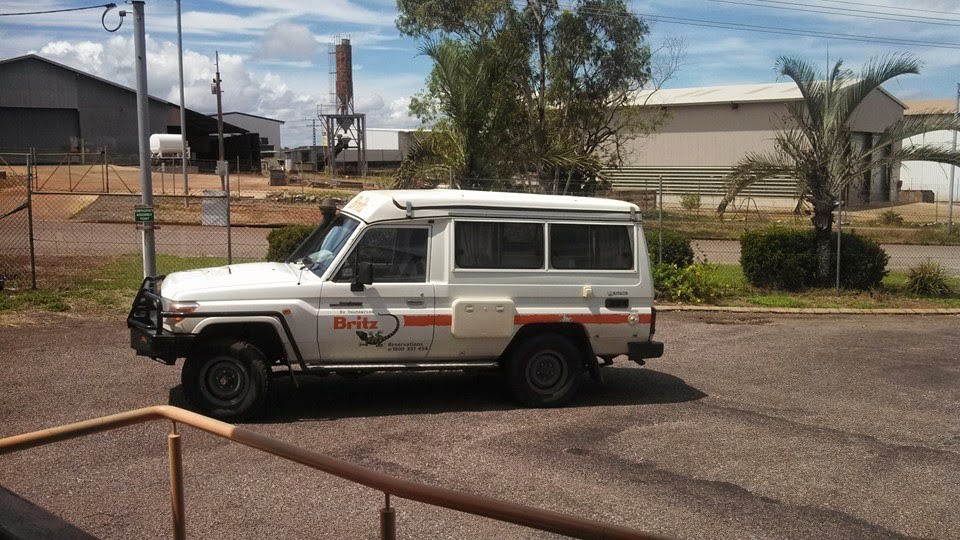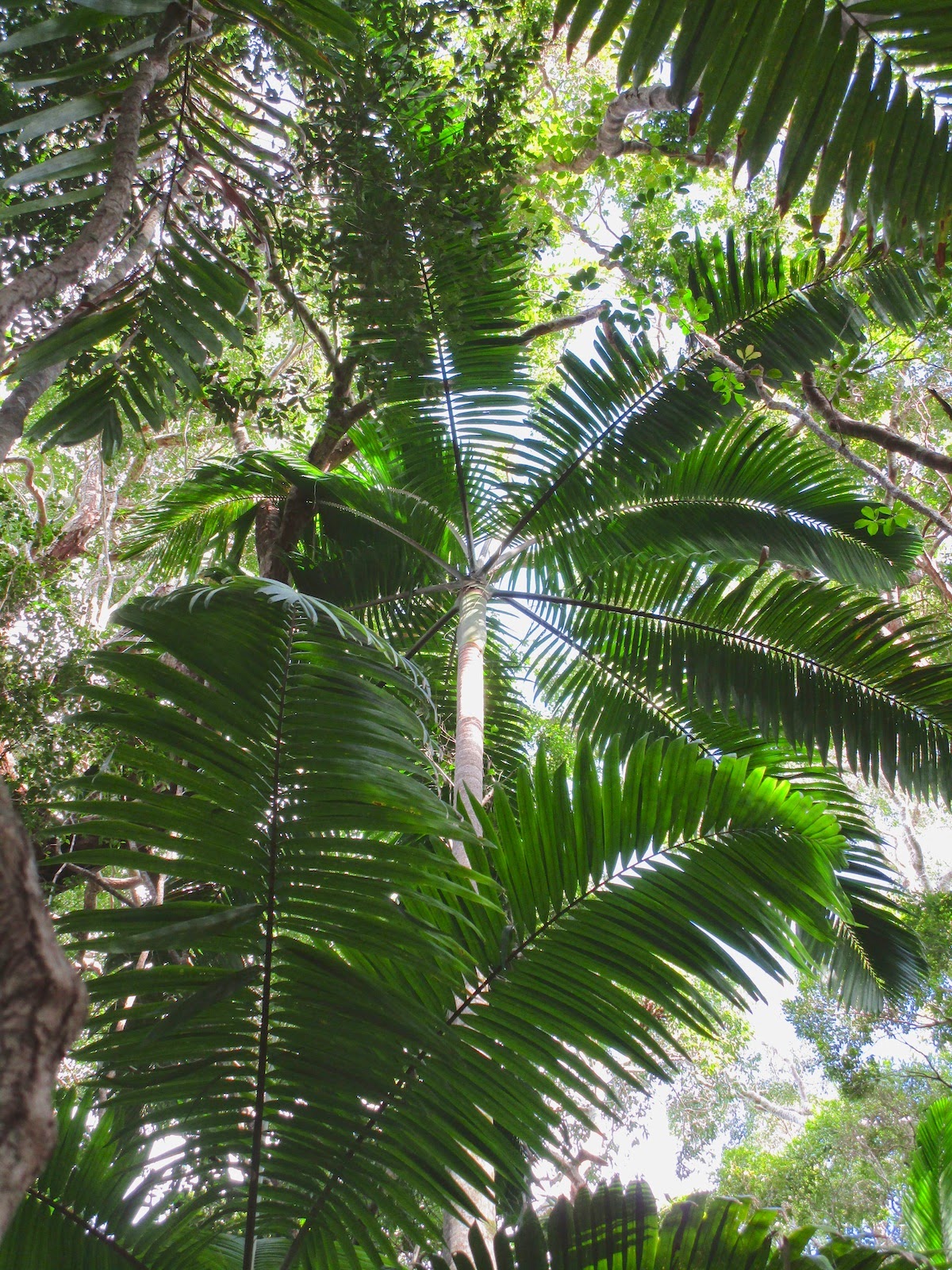So: The crown of the trip. Camping on an island in the Great Barrier Reef,
nth wonder of the world.
Lady Musgrave is a coral cay, an island formed where a reef breaches the ocean's surface. The coral around Lady Musgrave forms a ring, with a calm, shallow lagoon in the center. The island is a part of that coral ring, like a gem on a necklace.
 |
| Web photo. I cannot fly. |
I booked a campsite for three nights, and arrived at the nearest caravan park, in a town called 1770, a full day ahead of time to pack and prepare. I spent the day alternately organizing my gear and going to the beach. In the evening, I made friends with some grizzled (but friendly) bikers, and we shared a few beers and a tasty meal at the only pub in town, set right on the shoreline and packed with local characters.
 |
| 1770 is situated on an estuary, so the sun set across the water. |
 |
| There are these little crabs, see, and they grab claw-fulls of sand and run them through their little mandibles in order to filter out anything edible. As they spit out the sand, they form it into tiny little sand-spheres. By evening, the entire beach along the caravan park looked like it was made of Dippin' Dots, the Ice Cream of the Future. |
Caravan parks in Australia are an institution. My poor little Princess looks lonely and unadorned compared to the sprawling structures the average Australian unpacks from his camper-trailer, complete with multiple-room tents, full kitchens (and pantries!), and a "living room" of camp chairs sheltered by expertly erected tarps. By evening, a popular caravan park looks like an Eisenhower-era fantasy suburb, full of children bicycling in the warm evening air, neighbors sharing a laugh over plastic tumblers of wine, flavorful smoke rising from the barbecues. It felt nice just to walk around and take it all in.
The next morning, I awoke bright and early to board the boat to Lady Musgrave. A cruise company gives daily tours of the reef and the island, and they also pick up and drop off campers. The trip is about two hours.
Now, I've been on the ocean a couple of times, and while my head gets woozy if I try to read or watch TV in a moving vehicle, I've never been seasick before. But something about this particular voyage hit me hard, and I was sicker than a dog the entire time. I went through about five "emesis bags" and had to sit with my head between my knees even after the boat passed into the shelter of the coral lagoon.
After I recovered, though, things looked positive. This was going to be my home for three days:
 |
| Lady Musgrave |
 |
| The boat as seen from the island, with rich reefs and unreal blue water all around |
A smaller boat delivered us to the island, but not directly across the aquamarine lagoon. It went around the island, to the north-west side, where the reef runs right up to the beach. So the campsites weren't near the sheltered waters and the great snorkeling; you had to walk across the island for that. They were also on the sunny side of the island, where it got extremely hot in the middle of the day.
After setting up my tent, the second disadvantage of the campsites quickly became apparent. A sea bird called the black noddy roosts and nests in the trees of Lady Musgrave Island.
 |
| Returning from a hard day at sea, getting ready to shit on everything I care about. |
Over the course of three days, the birds shit on absolutely everything I owned: My tent, my sleeping bag, my backpack, my beach towel, my bathing suit, my snorkel gear. Miraculously, I escaped being actually shat on myself, but it didn't much matter, since everything I touched was coated in guano. And sea birds have especially vile, fishy-smelling shit.
 |
| Turd machine. |
So during the day, it was either blazing sun, or reeking bird shit. I tried to alternate between them as each became intolerable.
My fellow campers were all very friendly. As evening came on, several people in one group brought out guitars and ukeleles and invited everyone for a singalong. Given that my family unironically gathers around the piano for carols at Christmastime, this could have been right up my alley. Here's the thing, though: I'm the worst singer in my family, and I can at least carry a tune. I don't know how many times they blundered their way through that
Israel Kamakawiwo'ole mashup without ever once making it over the rainbow. They were all so nice, but every time the clumsy chords and off-key singing started up from the next campsite, I thought to myself,
Jesus, give the ukeflailey a rest already.
My escape was the water. The Great Barrier Reef is everything they say it is. Since my camera isn't waterproof, I couldn't take photos, but imagine
being small enough to fit inside a really expensive aquarium. Everything is so beautiful that it almost looks
fake. The colors, the shapes, and the diversity are all miraculous and alien.
There are countless species of fish, from tiny neon-blue minnows to flashing schools of metallic long-nosed gar to big, ponderous parrotfish. As you swim along, different fish react to you in different ways: some
dart and flee, some investigate, some ignore you, and I swear to god, if
a fish could shrug. It's fun to chase some, it's fun to swim along with others, and it's fun to just float there and watch while others defend their territory or chew the coral. We discovered a sea-turtle "cleaning station," where the turtles let little fish pick their skin free of parasites while they make facial expressions like a gentlewomen at a spa. We saw rays and colorful sharks and giant clams, which have surprisingly gorgeous mantles, decorated with neon stripes and spots. It's like visiting the Na'vi planet from
Avatar, but everything is real.
After night fell, all the kids on the island would troop around the beach with their flashlights, and when you heard them squealing, you knew they'd found a nest of baby sea turtles hatching. Everyone would crowd around and turn their lights off to watch the little guys flap across the sand, making their way toward the moon, which guided them into the sea. I saw a few go down the gullets of seagulls, but we managed to guard and save as many as we could. Adult sea turtles were so common in the lagoon that we eventually stopped pointing them out to each other.
While it was a visually beautiful place, the birds and the heat and the relentless sun made for difficult camping. I'm glad I did it, but I was also happy to get back on the boat and return to the relative comfort of Princess and the mainland (making sure to buy some seasickness tablets before we embarked).





















































